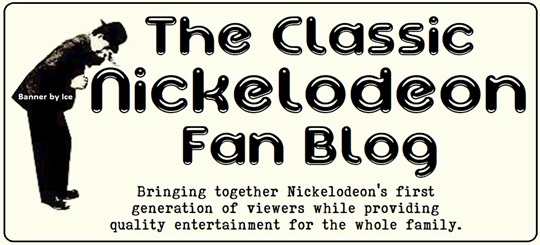By Les
Brown | March 4, 1979 | ARCHIVES | 1979
The
new network does not go by initials but by the name Nickelodeon. Since it
carries no advertising, it is liberated from the tyranny of audience
headcounts. Instead of being designed by specialists in the art of riveting the
great mass of viewers to the set, its programming is assembled by an authority
in children's education, Dr. Vivian Homer, who helped develop “The Electric
Company” for the Children's Television Workshop.
Programs
carried by Nickelodeon, a channel for children, are intended to be more
edifying than run‐of‐the‐mine children's shows. The channel tries to be
nonviolent, nonsexist, nonracist and nonpropogandistic. Its fare is a mix of
foreign animations, vintage movie serials, films produced for the school
market, short informational pieces, read‐aloud comic book presentations, music
and teenage forums.
Who
created this utopian service? Not a philanthropic foundation but the
entertainment conglomerate, Warner Communications. Nickelodeon was developed
over the past year at Warner's experimental two‐way cable installation, known
as QUBE, in Columbus, Ohio. Packaged into a 13‐houra‐day service, the programs
are to be distributed to cable systems nationally, beginning April 1, by
satellite. Even without commercials or direct subscription fees to consumers,
Warner expects the venture to make money.
Revenues
will come from the cable systems that carry the network, each paying 10 cents a
month for every household reached. A dime a month may seem paltry, but as
Warner executive observed, “Ma Bell built an empire on the 5‐cent phone call.”
Initially, Nickelodeon will reach 500,000 households, with the number expected
to treble in a year and to expand steadily thereafter. For the cable systems
paying the fee, Nickelodeon represents a loss leader — a giveaway likely to
attract additional customers. As new subscribers sign up for cable television
at $7 to $10 a month, the Nickelodeon revenues grow. With 10 million
subscribers, the, Nickelodeon dimes will add up to $1 million monthly.
“Cable
operators see this as an opportunity to be the good guys in comparison with
commercial broadcasters.” said John Lack, president of Warner Cable. That idea
implicit in the headline on the Nickelodeon brochure: “At Last. Children's
Programming That's Fit For Children.”
An Electronic Sandbox
Dr.
Horner explained the Nickelodeon philosophy: “We are trying to make it be
not‐television, different from commercial or public television. And much of it
will be — pardon the expression — good for them. The object is not to compete
with the commercial networks but to provide an alternative. We're not trying to
sell the kids anything. We're paid in advance for what we provide, and so we're
not motivated the same as other television programmers.”
“This
doesn't look at all like television fare.” Dr. Horner noted. “The pace is
different, slower, gentler. There is none of the bang‐bang‐bang that the
commercial people think necessary to catch and hold attention. The programming
made up of varied materials of varying lengths, so that none of it begins or
ends on the hour. I think of it as an electronic sandbox the kids can come to
whenever they wish.”
For
children between age 7 and the teens, the fare mostly films from the Bernice
Coe collection of quality films for television and from Xerox, Encyclopaedia
Britannica, Macmillan and other companies producing for schools.
Bridging
the age groups are old movie cliffhangers. such as the Tom Mix and Rin Tin Tin
serials, and a new television form billed as Video Comic Books, in which the
dialogue balloons are read by off‐screen actors. ‘'I think of it as a kind
supported reading activity, without making any educational claims for it,” Dr.
Horner remarked.
Nickelodeon's
big, original production is a daily teenage program, “America Goes Bananaz.”
This is a youth version of the talk‐variety programs typified by “The Mike
Douglas Show,” with disco music and guest‐star spots girding the “rap
sessions,” or dialogues, on teenage issues. “This program has some conventional
TV concepts,” Dr. Horner conceded. “but the difference is that it cares about
kids and their concerns, without playing down to them.”
Whatever
the merits of the particular programs, the Nickelodeon concept elevates
children's television from the programming ghettos to which it has been
consiened by the networks and also insulates it from the cynicism (If
commercial impresarios.
To
the extent that television is a babysitter, the least that may be said for
Nickelodeon is that its attitude more positive, and its approach more
responsible, than those of the alternative electronic nannies.
Nickelodeon
is not the first venture of its kind but only the most ambitious. Last
September, UA‐Columbia Cablevision, in partner‐ship with Learning Corporation
of America, began „ending out a weekly children's film senes, “Calliope,” for
about 2 cents a subscriber. Programs have included “The Mime of Marcel Marceau”
and “Ballet With Edward Villella. “Sent out as an added service to the sports
events on UAColumbia's Madison Square Garden cable network, “Calliope” is
received in about 850,000 households, according Kay Koplovitz, manager of the
miniature network. “Our concept.” she said, “is not to provide programming in
bulk but rather the best children's films available. There aren't many of them
that we could fill up a channel all day, every day of the week.”
Still
to come in the cable‐television sweepstakes is a new family‐entertainment
channel, laden with children's programming, from Home Box Office, largest of
the pay‐television networks.
In
cable, as in commercial television, children's programming is growing hotly
competitive. The difference is that the race is along the high road rather than
the low.
A
version of this archives appears in print on March 4, 1979, on Page E20 of
the New York edition with the headline: Children's Programming
Without Commercials.


No comments:
Post a Comment